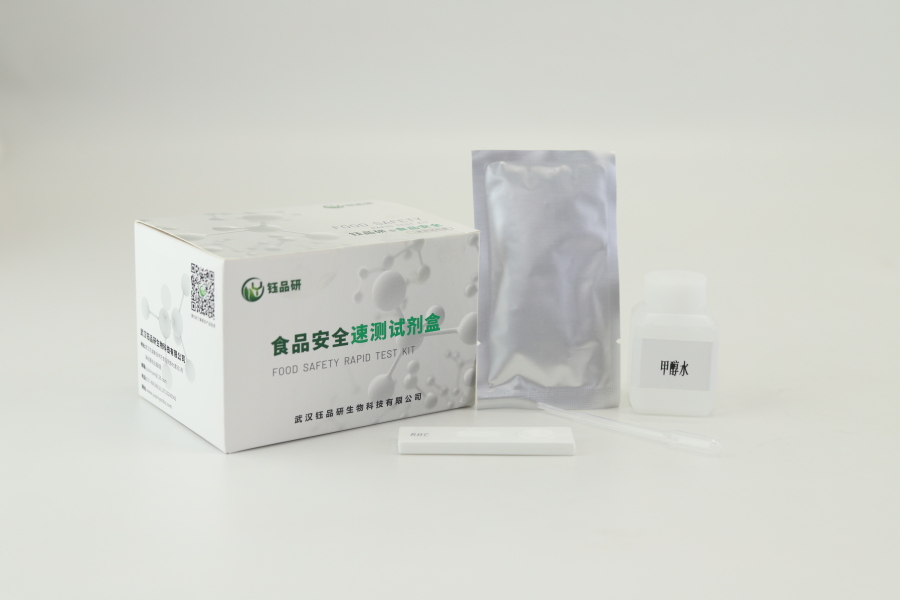Pesticide residue colloidal gold detection card (dimethylpentyl) is a rapid and sensitive detection tool in the field of food safety detection. It is mainly used for qualitative or semi-quantitative analysis of dimethylpentyl residues in agricultural products. As a selective herbicide, dimethylpentyl is widely used in cotton, corn, soybean and other crops, which can effectively control a variety of annual grasses and broadleaf weeds. However, excessive or improper use may lead to excessive residues in agricultural products and affect human health, so it is crucial for the rapid detection of its residues.
From the principle point of view, this kind of detection card is based on immunochromatography technology, and the core is to use the colloidal gold-labeled dimethylpentyl antibody to compete with the dimethylpentyl antigen in the sample to bind the dimethylpentyl-carrier protein conjugate on the detection line. If the concentration of dimethylpendimethalin in the sample does not exceed the detection limit, the antibody will bind to the conjugate on the detection line and show a red band; conversely, the antibody binds to the antigen in the sample, the detection line does not show color, and the reaction is judged to be valid by the red band of the quality control line. The whole detection process does not require complicated instruments, and only takes 10-15 minutes to produce results. The operation steps are simple. It only takes three steps: adding the sample, dripping the sample buffer, and waiting for the result.
In the application scenario, it is suitable for agricultural production bases, wholesale markets of agricultural products, food processing enterprises, customs and market supervision departments, etc. For example, farmers can quickly test agricultural products before harvest to determine whether they meet safety standards; market supervisors can screen on-site during sampling to detect products that exceed standards in a timely manner; food companies can check raw materials through it to ensure production safety.
Compared with traditional detection methods (such as gas chromatography, liquid chromatography), colloidal gold detection cards have obvious advantages: First, the detection speed is fast, no sample pre-processing or only simple processing is required, suitable for on-site rapid screening; second, it is convenient to operate and can be used without professional training, reducing the technical requirements for testing personnel; third, the cost of single detection is low, and the cost of single detection is much lower than that of large-scale instrument detection; fourth, it is portable and can be used in field, market and other on-site environments to improve detection efficiency.
However, the test card is mainly used for qualitative or semi-quantitative detection. If accurate quantification is required, it still needs to be combined with laboratory instrument analysis. However, as a preliminary screening tool, it plays an irreplaceable role in food safety rapid warning, risk investigation, etc., and is one of the important technical means to protect the "safety on the tip of the tongue".


